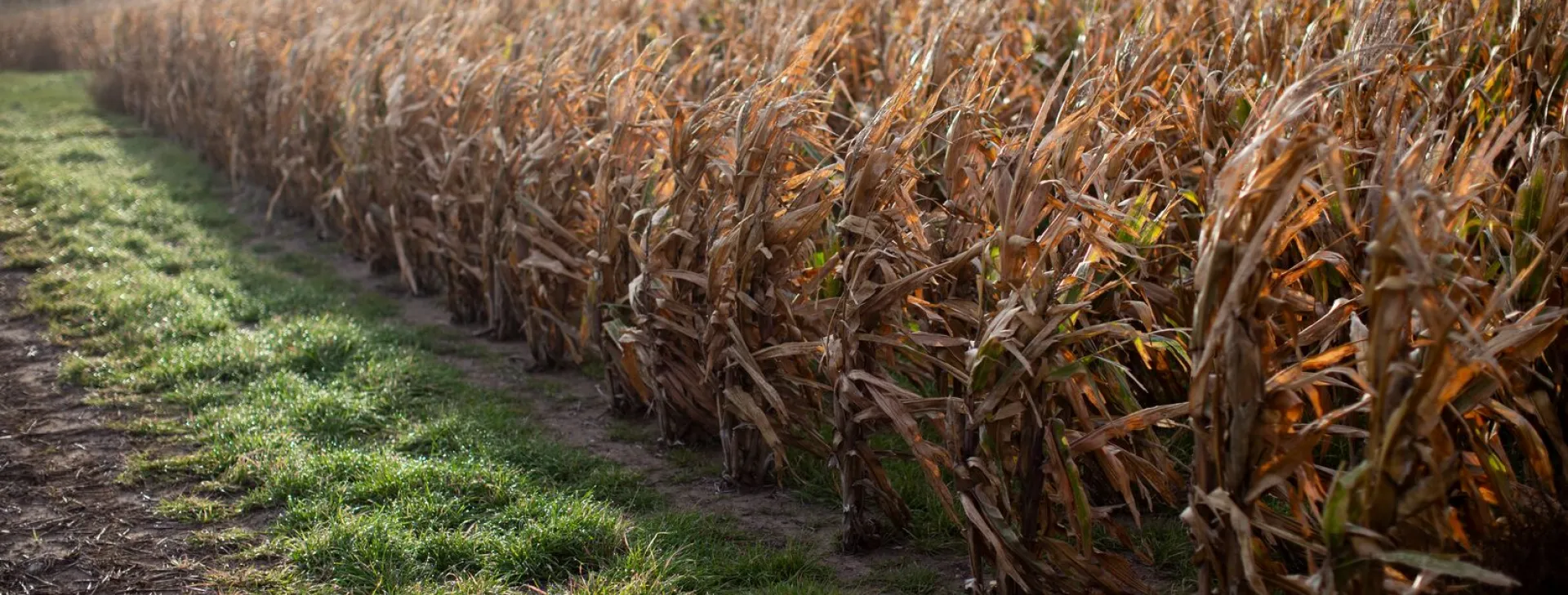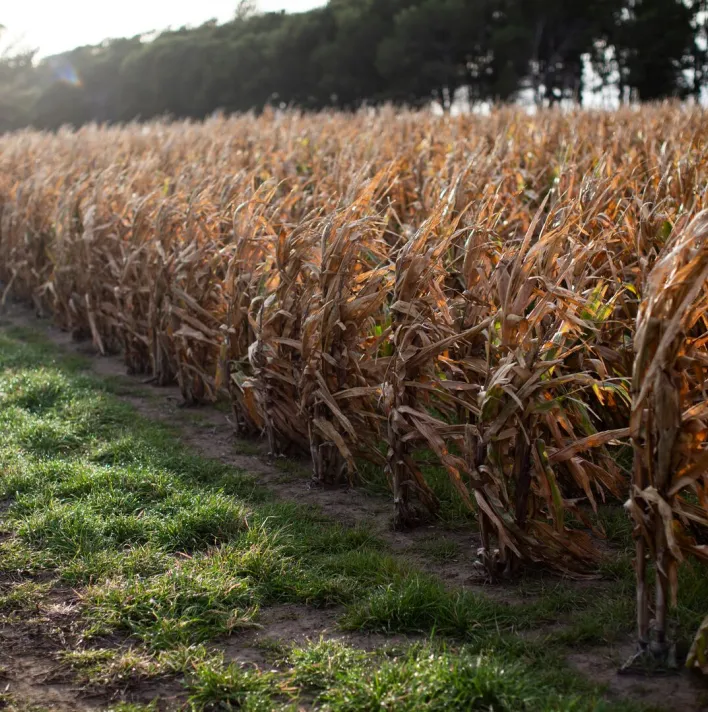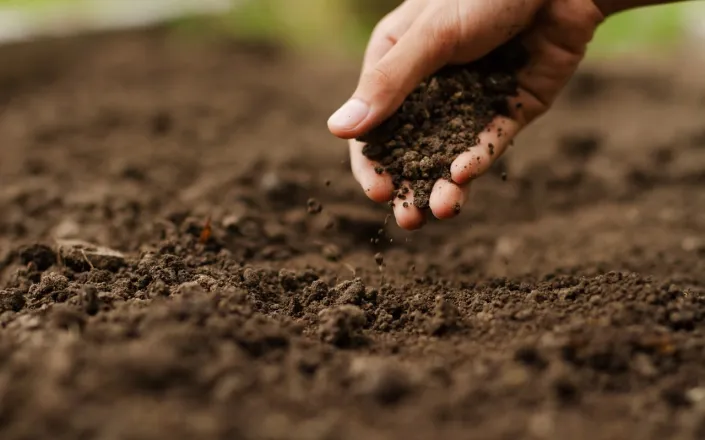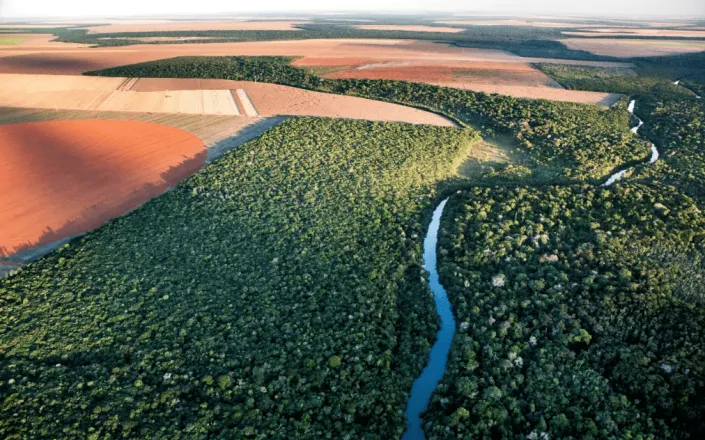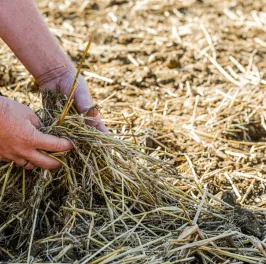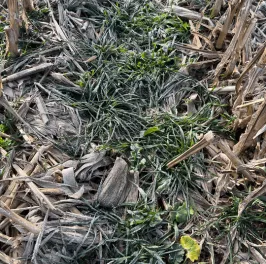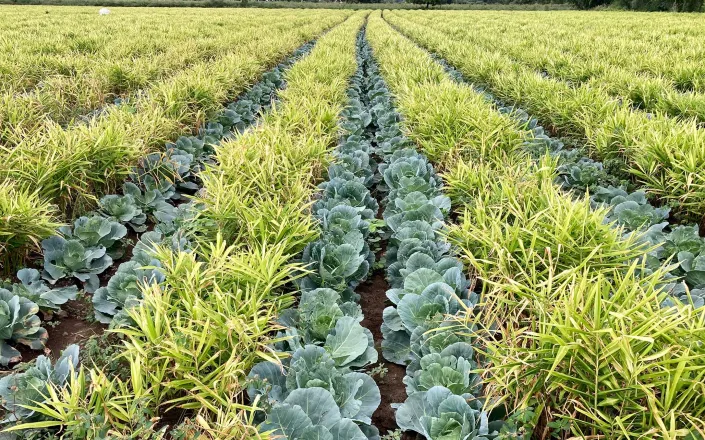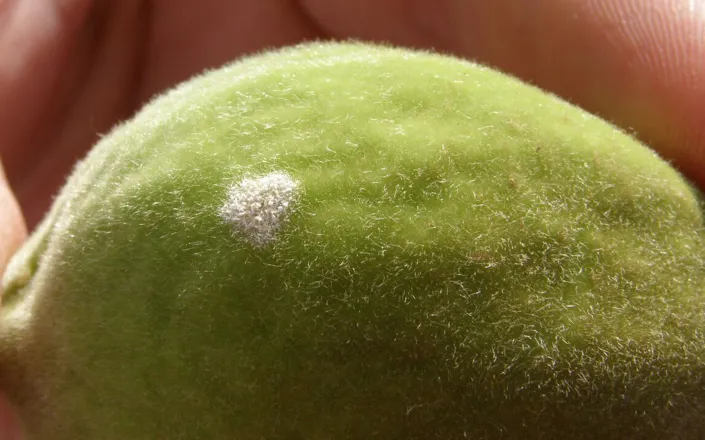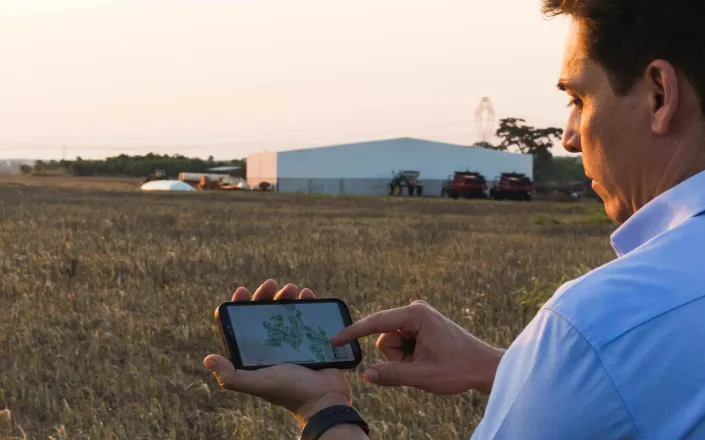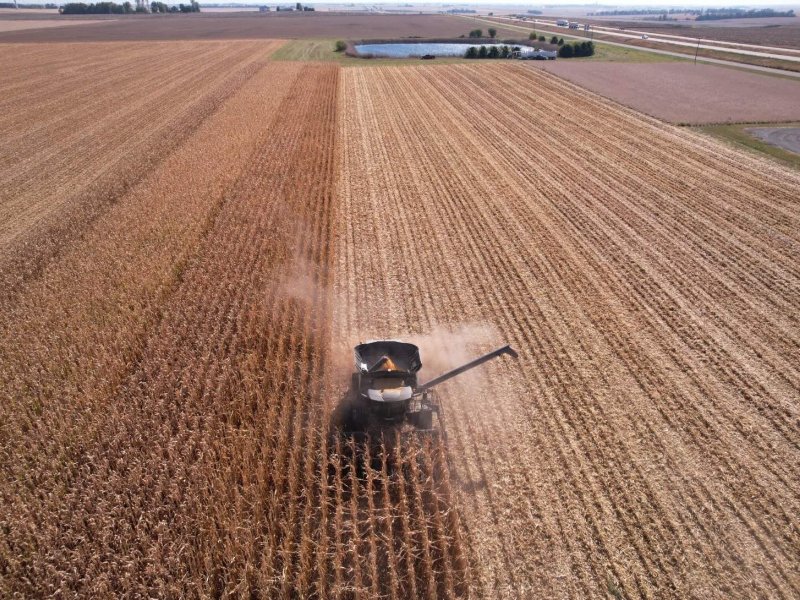
What is cover cropping?
Some of the common ways farmers are driving soil improvements today on their farms include minimizing soil disturbance with conservation tillage, retaining crop residue to build organic matter, and using cover crops to build nutrients and organic matter.
Instead of leaving the field fallow following a crop rotation, cover cropping - where you plant non-harvested crops such as rye, brassicas, or legumes (clover, peas or beans) between main crop cycles - helps to protect and enrich the soil. Often planted after harvest or before the next planting season, cover cropping can reduce erosion, enhance structure, manage moisture, and support soil structure and microbial life.
For growers, healthy crops begin with healthy soil, and cover crops are important tools in that transformation. It’s estimated that up to 40 percent of the earth’s soil is moderately or severely degraded, a challenge that cover crops can help address.
On fourth-generation farmer Tyson Walters’ farm in central Illinois, in the US, the business has implemented regenerative agriculture practices including no-till, crop rotations, and grazing.
Walters says: “Cover crops are amazing for us... they protect and enrich the soil between crop rotations.”

What is the difference between cover cropping and mulching?
Both cover cropping and mulching aim to protect the soil, but they work in different ways. Mulching involves placing layers of organic or inorganic material like straw, leaves, or compost on top of the soil. It suppresses weeds, helps retain moisture, and shields the ground from extreme temperatures.
Cover cropping, however, uses living plants that interact directly with the soil ecosystem. They grow roots that improve structure, host soil microbes, return nutrients, and enhance soil fertility over time. While mulch acts more like a blanket, cover crops actively build and restore soil from within.
In Brazil’s Cerrado, a vast tropical savanna that’s one of the world’s most biodiverse and agriculturally important regions, Syngenta is working with farmers on targeted cover cropping to accelerate soil recovery in degraded areas. Their results showed faster-than-expected improvements in yield and soil health even in tough conditions.
The first REVERTE® farmer in Brazil
See how Brazilian farmer Igor Biancon revolutionized his farm through cover cropping, cattle integration, and native vegetation preservation
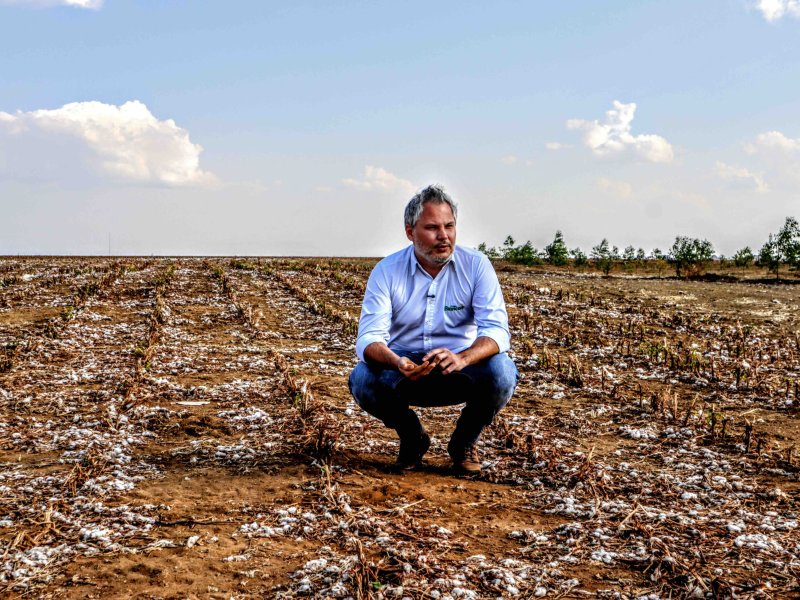
What are the benefits of cover crops?
By keeping soil covered year-round, cover crops shield the topsoil from wind and rain.
Legumes fix nitrogen (the process of converting atmospheric nitrogen into a usable form by plants for growth) and boost organic matter, key for long-term soil function.
Cover crops help diverse microbes, pollinators, and beneficial insects thrive.
Cover crops help soils retain moisture and sequester carbon, aiding drought resilience. They also reduce nutrient leaching by capturing excess nitrogen and phosphorus before they can escape into nearby water systems.
Cover crops’ biomass and allelopathy (a biological process in which plants are able to prevent other plants from growing near them) suppress weeds which can support integrated weed management approaches.
Farmers, including Syngenta Group CEO Jeff Rowe, are seeing real benefits from regenerative approaches. On his Illinois family farm, soil health metrics have improved significantly after just a few years of using cover crops, a pace faster than the typical 10- to 15-year horizon often expected for these kinds of improvements.

How do you grow cover crops?
The process starts with choosing the right cover crop based on your farm’s goals. For example, if your soil is low in nitrogen, a legume such as clover or vetch might be the right choice. If your main issue is weed pressure, rye or buckwheat can provide fast-growing ground cover. Most farmers plant cover crops after harvesting their main crop, though some may seed between rows during the growing season. The crop is then terminated before planting begins again, usually by mowing, rolling, or using herbicide, depending on the system in place.
Some growers, like Tyson Walters, take things a step further. On his farm, cover crops are also used to feed cattle before being worked back into the soil, creating a circular system that regenerates the land and supports livestock at the same time.
Can cover cropping be used with no-till farming?
Cover cropping can be used with no-till farming. In fact, cover cropping and no-till often work best when used together. Both of these regenerative agriculture practices aim to protect and improve the soil without disturbing its structure. By keeping the soil covered and biologically active year-round, this combination helps reduce erosion, retain water, and increase organic matter.
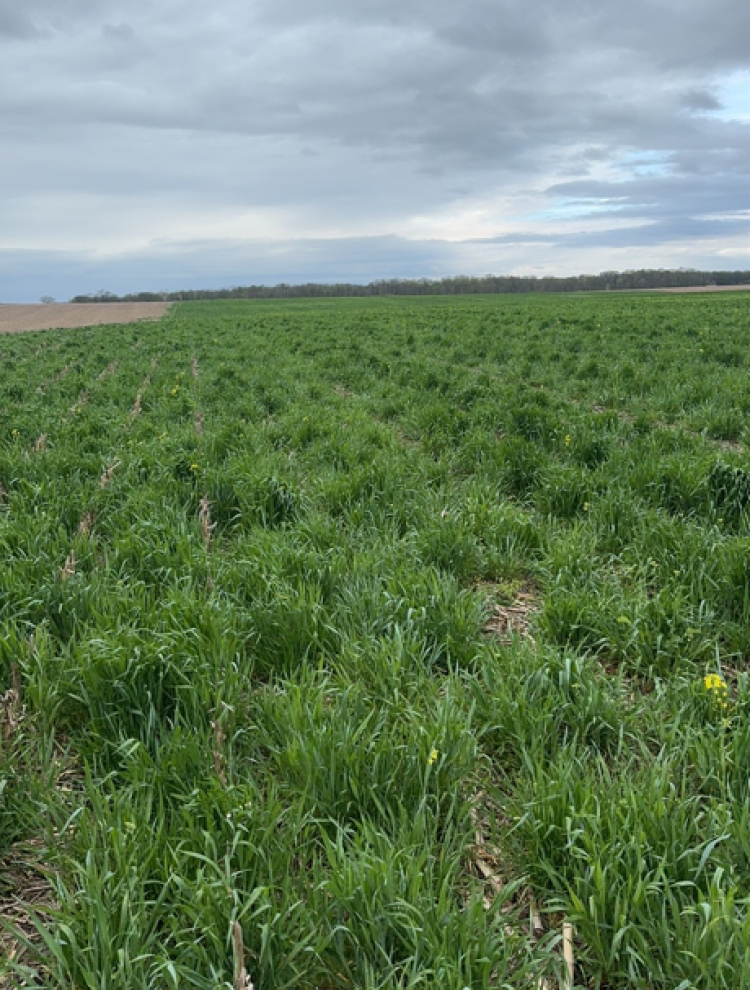
What are the different types of cover crops?
- To improve sandy soils, cover crops such as hairy vetch, winter rye, and certain grass-legume mixtures help enhance soil structure, retain moisture, and prevent nutrient leaching.
- For soil regeneration, crops can be broadly categorized into legumes, grasses, and brassicas, each offering unique benefits for soil regeneration.
- Winter cover crops like rye, oats, wheat or barley help protect soil during colder months and reduce erosion.
- Nitrogen-fixing legumes such as clover, vetch, or field peas help replenish nitrogen levels in the soil.
- Drought-tolerant species include cowpeas, sainfoin, and certain clovers, as well as non-legumes like pearl millet and sorghum-sudangrass.
What is the best performing cover crop?
There’s no single best performing cover crop; it depends on what production outcome you’re trying to achieve. For sheer biomass and weed suppression, cereal rye is commonly used. For nitrogen return, legumes, such as clover and vetch, are highly effective. Some growers combine multiple crops in the field to get the best of both.
Does Syngenta sell cover crop seeds?
Syngenta offers a range of seed mixes designed to support biodiversity, soil health, and sustainable farming practices. These include solutions like the Operation Pollinator mixes and other stewardship-focused blends that can complement cover cropping strategies.
While not marketed specifically as 'cover crop' seeds, many of these seed mixes offer similar benefits such as improved ground cover, increased organic matter, or ecosystem services. Seed availability varies by country, so it's best to check with your local Syngenta team for tailored advice for your region.
Cover cropping is more than just a seasonal practice. Whether it's used on its own or combined with no-till and crop rotation, it helps farmers build healthier soils, stronger yields, and more resilient systems.
Because we work with farmers in more than 90 countries, we invite you to visit your country’s website to view the available products from Syngenta.
Discover more about farming technologies and practices
